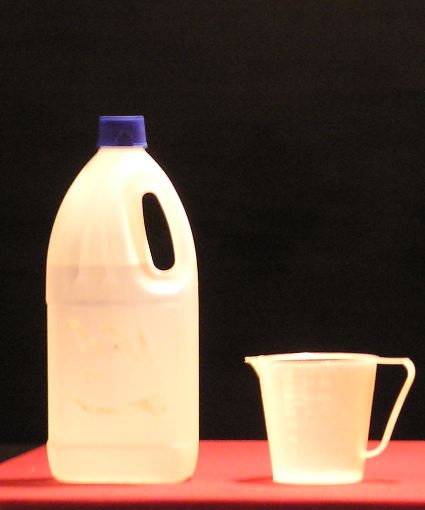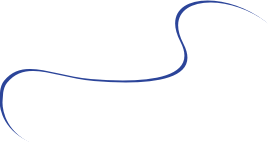 |
|
| Science education | |
| Video |
SCIENCE EDUCATION RESOURCES
The mysterious liquid
by formaScienza
Objective: tell to students the main steps followed by a scientist in projecting an experiment, starting from a problem to be solved. Let the students experience the main features of a scientific laboratory.Age: 11-18
Equipment:
- Balance
- Water jug
- Bottle with the 'mysterious liquid'
- Lighter
- Toothpick
A common idea that is very often proposed by someone is to verify if the liquid is flammable. The students are in this case asked to project a precise experimental protocol in order to verify the hypothesis, and to consider in particular the conclusion they will draw after the experiment before doing it: if this thing happens, what hypothesis can they eliminate? And if this other thing happens? (For each hypothesis, what do they expect from the experiment?). The experiment must be actually achievable in the classroom, and take into account the possible dangers (e.g. it is not possible to throw a burning object in the bottle).
An example of how to make this experiment can be: soak the tip of a toothpick in the liquid and then try to burn it. It burns, after some time. The only way we have to understand the effect of the liquid on this burning is to try to burn the other tip without soaking it in the liquid, and compare the time we have to wait before it starts burning in the two cases. This example shows that without a control the single experience (the toothpick burns) say us nothing. After this experiment the liquid results to be not flammable. What is the favourite hypothesis now? Usually it is water.
In order to verify this hypothesis we need another experiment. When students overcome the initial discouragement, due to their idea that only an expert can give an answer to the question, they usually propose to measure the boiling or freezing temperature, or to measure the density.
Let us consider this last case. Because the water is the favourite hypothesis, it is useful to compare directly the density of water and the mysterious liquid. This comes at the end of a discussion among students about the expected results of the measure of density: someone says it must be 1, the conductor then asks: what happens if we have 1.01? This question provokes a long discussion, then the density comparison is usually preferred, without attention to the particular numeric value.
Students becomes aware that they need an instrument in order to make the measurement, in this case a simple balance. They project the experiment, eliminating one by one all the superfluous steps (usually at the beginning students would measure the volume of the jug, its weight, etc.). They understand that they only need to measure the weight of the same quantity of the liquid and the water, put in any container, and compare the two measures.
At this point the students start to make the measurement. After a first measurement, they usually try to draw a conclusion: the weight of the liquid is less, or more, or the same of the weight of water. But then someone proposes to make another measurement in order to be sure. At this point it could happen that:
- the second measurement confirms the conclusion drew after the first one, with similar values;
- the second measurement confirms the conclusion drew after the first one, but values are strongly different;
- the second measurements gives the opposite result with respect to the first one.
How to solve this problem? After various suggestions to build more precise instrument to fill a jug (dropper, etc.), someone suggests the idea that we only need to make many measures in order to compensate the errors. The conductor therefore introduce the importance of statistics. The conductor stresses the fact that uncertainty is not only due to the instrument, but to the human experimenter and to the experimental protocol as well. In order to overcome this difficulty we have to repeat the measurement many times and to calculate an average value. The conductor could observe as well that it is necessary that the observed phenomenon is reproducible: science can not deal with things that happens only once.
The experiment finally gives an answer (usually it is that we can not distinguish the density of the mysterious liquid from the density of water in the limits given by our precision). The conductor must be careful to all the logical steps in order to get to the conclusion: the statement 'the liquids have the same density' is different from the statement 'the liquids are the same liquid'.
After the experiment we have a thesis: it is not a certainty, but a temporary conclusion that can be revisited in any moment. We could make other experiments in order to have more confidence in the validity of the hypothesis, and this experiments could be disprove it as well. At this point the conductor introduces a discussion about the expression 'experiment failed': the experiment does not fail if the hypothesis is not confirmed, it fails when it says anything new.


If the previous experience is done in parallel with more classes, students can write an article after the experiment: a scientific article written respecting the standards of scientific writing (e.g. state of the art, hypothesis, experimental protocol, results, data analysis, conclusions and perspectives). The conductor then plays the role of the editor of the scientific journal , who submit the article to a referee: another class who made the same experience. So the two classes play the role of referees, each one for each other.
The refereeing process has to be done in the next lesson: it is useful to give to students the opportunity of think again on the same problem after a certain amount of time. Students can look to the same experiment through the eyes of another experimenter. The conductor must observe and stress any difference in protocol, data analysis, conclusions, etc. The refereeing process must be simulated in a realistic way: the 'letter of the referee' contains suggestion for the author and not corrections (as it happens in school). This role play shows to students the slowness of the scientific process and the way of functioning of communication inside scientific community. The letter of the referee will be discussed in the next lesson, and after the correction of the article we use to publish it on formaScienza website.
At the end of the experience it comes natural for most of students to ask what is there actually in the bottle. The conductor must tell to students that he does not know: the experiment told us something, but it gave no certainties. The conductor must stress that the best chemical laboratory of the world would give an answer with some uncertainty too, though very low.
